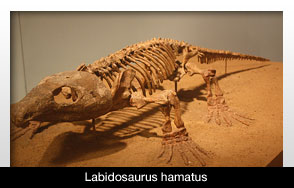 |
An unlucky reptile about 275 million years felt the same, debilitating pain we feel today.
This particular reptile suffered the first confirmed case of a toothache. The jaw fossil for the Labidosaurus hamatus, which lived in what would be Oklahoma today, showed missing teeth had eroded the bone.
The research team at the University or Toronto Mississauga did a CT-scan and saw a major tooth infection that resulted in the loss of multiple teeth and an abscess.
This discovery also documents a case of evolution with regard to eating and chewing food. According to the Robert Reisz, the leader of the research team, these reptiles made the necessary adaptions to life on land. The result was developing permanent teeth that stayed stationary in one’s mouth after the baby teeth fell out. Previously, teeth were loosely connected to the jaw and new teeth grew in regularly.
These more advanced teeth came from the reptiles’ plant diet. To fully chew the plants and absorb the nutrients, stronger teeth were needed. That’s why the interchangeable teeth would no longer suffice.
The problem with teeth permanently attached to the jaw is that they leave open the possibility to infection. As time went on, these teeth eventually came in contact with bacteria. Inevitably, the reptiles would encounter some type of infection, tooth loss or bone loss.
Humans today have the same system of teeth, with the baby teeth eventually giving way to the permanent teeth. We’re susceptible to the same kinds of issues if we don’t take care of our teeth.
But the dentist can fix the problems—the ancient reptiles weren’t as lucky.
This study is shown online in the journal Naturwissenschaften—The Nature of Science.

|











